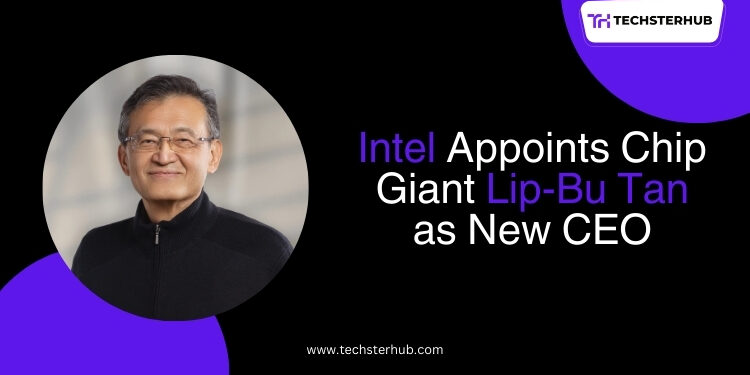Intel hired Lip-Bu Tan, a well-known industry expert with extensive experience in the chip sector, as its new CEO in a major development. Intel expects its new leadership to provide fresh direction at a critical moment when fierce competition challenges it in the fast-changing tech market. We need to analyze Lip-Bu Tan’s background to understand his new role’s importance at Intel and its implications for the semiconductor industry.
Who Is Lip-Bu Tan?
Lip-Bu Tan brings significant leadership experience to the semiconductor technology industry. He possesses deep expertise in both business operations and technical domains of the semiconductor field. Before his appointment at Intel Tan served as the CEO of Cadence Design Systems which develops electronic design automation software essential for semiconductor companies in complex chip design.
Industry experts acknowledge Tan for his exceptional ability to foster growth and innovation while his profound knowledge about the chip industry’s challenges and opportunities positions him as an ideal leader for Intel’s upcoming development phase. His reputation stems from his proven ability to build and manage high-tech companies successfully.
Why Is This Appointment Important for Intel?
Intel has encountered multiple obstacles throughout the last several years. The company which led the semiconductor industry has experienced growing competition from companies such as AMD (Advanced Micro Devices) and Nvidia along with new entrants in chip manufacturing. Intel’s production delays for next-generation chips have negatively impacted its market share and reputation.
Intel has appointed Lip-Bu Tan as CEO to demonstrate its dedication to reclaiming its top spot in the semiconductor industry. The combination of Tan’s vast experience in the chip industry and his innovative leadership skills will enable Intel to tackle current obstacles and improve its market position against fierce competition.
What Could Lip-Bu Tan Bring to Intel?
The timing of Lip-Bu Tan’s appointment as Intel’s CEO is critical for the company because his leadership holds potential to significantly enhance several key areas.
- Driving Innovation in Chip Design and Manufacturing
Innovative advancements remain essential for semiconductor companies to maintain their competitive edge as the industry develops. Intel will benefit from Tan’s extensive expertise in chip design and manufacturing to concentrate on creating new technological advancements. Under his leadership Intel can enhance its manufacturing processes while cutting delays to fast-track next-generation chip development. Intel would gain a competitive edge in the semiconductor market against AMD and Nvidia through this approach. - Fostering Stronger Partnerships and Collaborations
Tan’s background in technology enables him to forge more robust partnerships within the semiconductor industry. Intel has made efforts to establish collaborations with more businesses across software and cloud computing sectors. Intel can broaden its market presence and strengthen its position in the technology sphere through Tan’s skill in building essential business relationships. - Expanding Intel’s Role in Emerging Technologies
Tan’s combined experience in semiconductor and tech fields enables Intel to move past conventional chip production into new technological areas. Intel has already started investing in cutting-edge fields such as artificial intelligence (AI), autonomous driving systems and the Internet of Things (IoT). Intel could advance its presence in these technological domains by creating specialized chips to serve new markets and applications under Tan’s leadership. - Navigating Global Challenges
Multiple global difficulties including supply chain disruptions and geopolitical tensions as well as trade regulations impact the semiconductor industry. Tan brings valuable management skills from handling businesses during complex global situations which will benefit Intel as it addresses these issues. Under his leadership Intel will be able to secure stable access to necessary materials and resources which will help the company maintain resilience amidst global changes.
Intel’s Vision for the Future
The new CEO at Intel has been tasked with guiding the company through transformative changes that will enable it to reclaim its competitive position in the market. The semiconductor industry undergoes rapid technological changes so Intel must maintain its competitive position to remain relevant.
Intel has invested heavily in its production facilities by building new semiconductor plants. Tan’s leadership can steer these investments to accelerate and improve efficiency in delivering next-generation chips for the company. Intel’s dedication to manufacturing innovation may allow the company to recover its top position in the chip market currently challenged by AMD and Nvidia.
Intel aims to grow its presence across emerging markets including AI technology development, data center operations, and autonomous driving advancements. As Intel explores new market opportunities Intel will leverage Tan’s capability to drive growth and adapt to technological transitions which will establish long-term success in future industries.
The Semiconductor Industry and Intel’s Position
The worldwide semiconductor industry faces swift transformation because of the growing demand for chips in multiple sectors including smartphones and AI applications. Intel faces both obstacles and prospects due to the current market situation.
Intel traditionally held a leading position in chip manufacturing yet recently encountered tough competition. AMD which used to be a minor player in the chip market now commands a larger market share through its powerful chips that serve both consumer and business platforms. Nvidia stands out as a leading competitor by dominating the AI and data center markets through its powerful Graphics Processing Units.
Intel maintains a dominant market position because its processors power numerous devices such as personal computers, servers and data centers. Intel’s strong position in producing chips for other companies creates additional revenue streams while increasing its market influence.
Lip-Bu Tan’s leadership plays an essential role in Intel’s efforts to maintain its competitive edge within the ever-changing market. Intel can maintain its leading position in essential markets and enter new markets through Tan’s focus on innovation along with collaborative efforts and new technological advancements.
What Does This Mean for Intel’s Employees and Investors?
Intel’s employees might view Lip-Bu Tan’s appointment as a sign of renewed optimism and direction for the company. Tan’s significant background in leading big tech firms positions him to establish Intel’s strategic objectives for the future. Under his leadership Intel could experience heightened innovation as teams strive to break new ground in chip design and manufacturing.
The appointment of Tan as Intel’s leader should build investor trust in the future prospects of the company. Tan’s established success in the semiconductor sector positions him to lead the company toward effective competition through his leadership. Intel’s ability to fulfill its objectives during Tan’s leadership could result in substantial returns for investors in the near future.
Conclusion
The elevation of Lip-Bu Tan to Intel’s CEO position represents a critical turning point for both the organization itself and the semiconductor field. Tan enters the position with extensive experience alongside strong leadership qualities and technical expertise which will assist Intel in managing both current challenges and potential opportunities within the fast-changing tech market.
Intel will depend on Tan’s leadership to guide their innovation efforts and partnerships which will help establish their position in emerging technologies for their future in the semiconductor market. Intel stands on solid ground for future achievements because its leadership demonstrates both vision and relevant experience.











